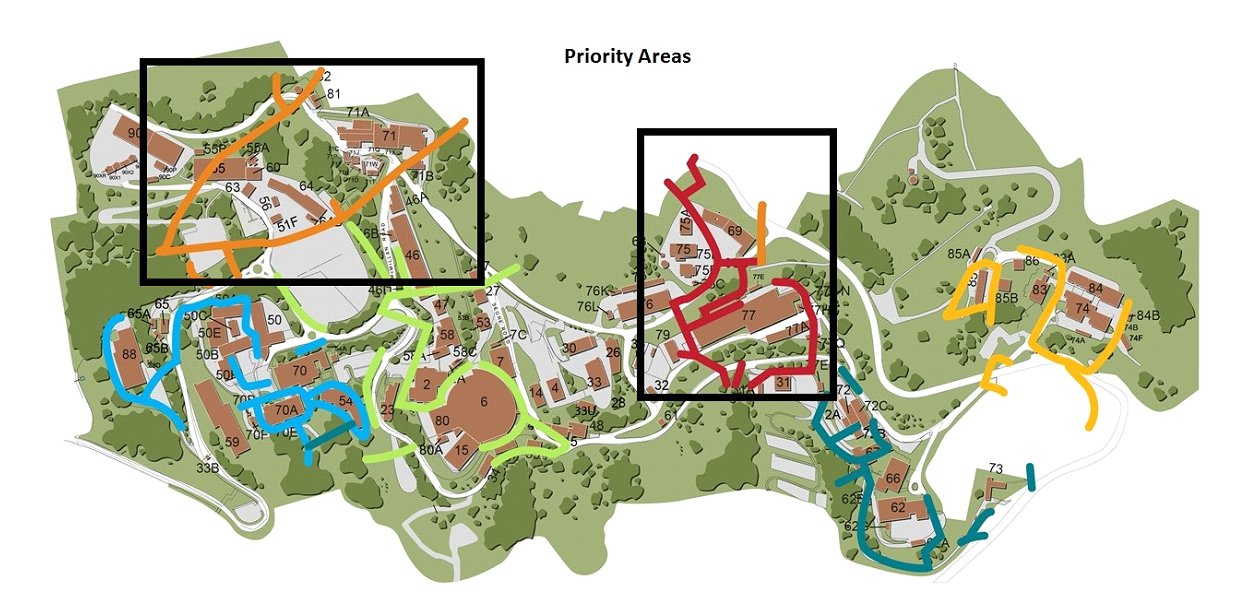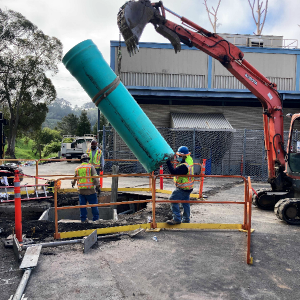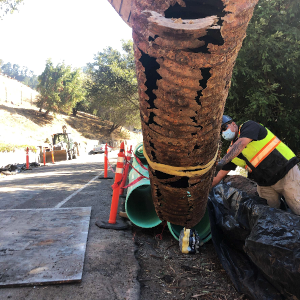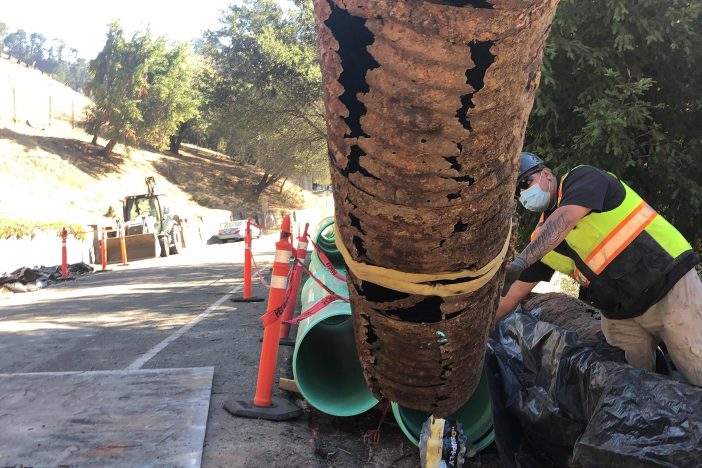Storm drains are not sexy. Designed to be out of sight and out of mind for the majority of the population, storm drain systems are a key yet invisible piece of the Lab’s infrastructure. When a series of atmospheric rivers swept over California in January, the Lab’s storm drain systems helped reduce hillside saturation and ensure the overabundance of water was channeled to watersheds.
Part of this seamless success is due to recent upgrades to the storm drain system. The Department of Energy, through the science laboratory infrastructure (SLI) program, provided $7 million in General Plant Project (GPP) funding for the Lab to upgrade and repair storm drain systems on the hill site. The Projects and Infrastructure Modernization (PIM) Division completed the work between July 2020 and October 2022.
“While storm drains are generally not a conversation topic, PIM’s recently completed work is important to discuss,” said Deputy Lab Director of Operations Michael Brandt. “Infrastructure renewal is a key part of our strategy to build the Lab of the future. Completing the storm drain project by channeling the water off our hillsides reduces flooding and landslide risk, which protects all of us.”
The Lab’s hill site contains six different storm drain systems that help direct water into natural watersheds. PIM used a wealth of data collected from the Facilities labor shop and engineering teams, as well as site surveys, and footage from cameras run through pipes, to prioritize repairs to two of those systems: the Chicken Creek watershed and the Blackberry Creek watershed.
The project team repaired or replaced over 8,000 linear feet of pipe that had collapsed due to age or been damaged by tree roots and animals. For some sections, the team inserted new liners that were steamed in place to create a new and improved pipe section. The benefits of this work were realized during the recent rains events as the new drain system effectively shed water from the Lab’s steep hillsides reducing both flooding and landslide threats.




